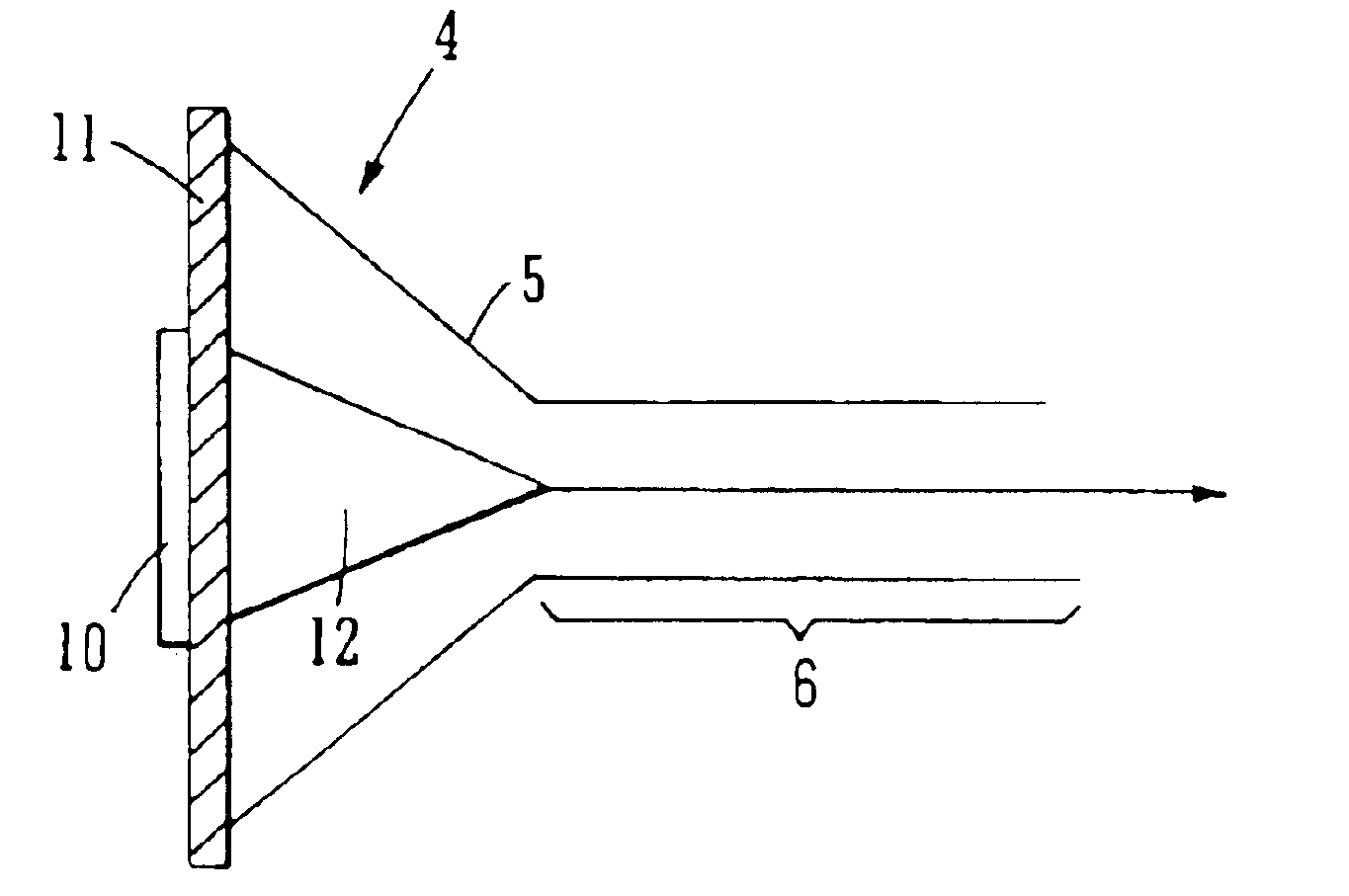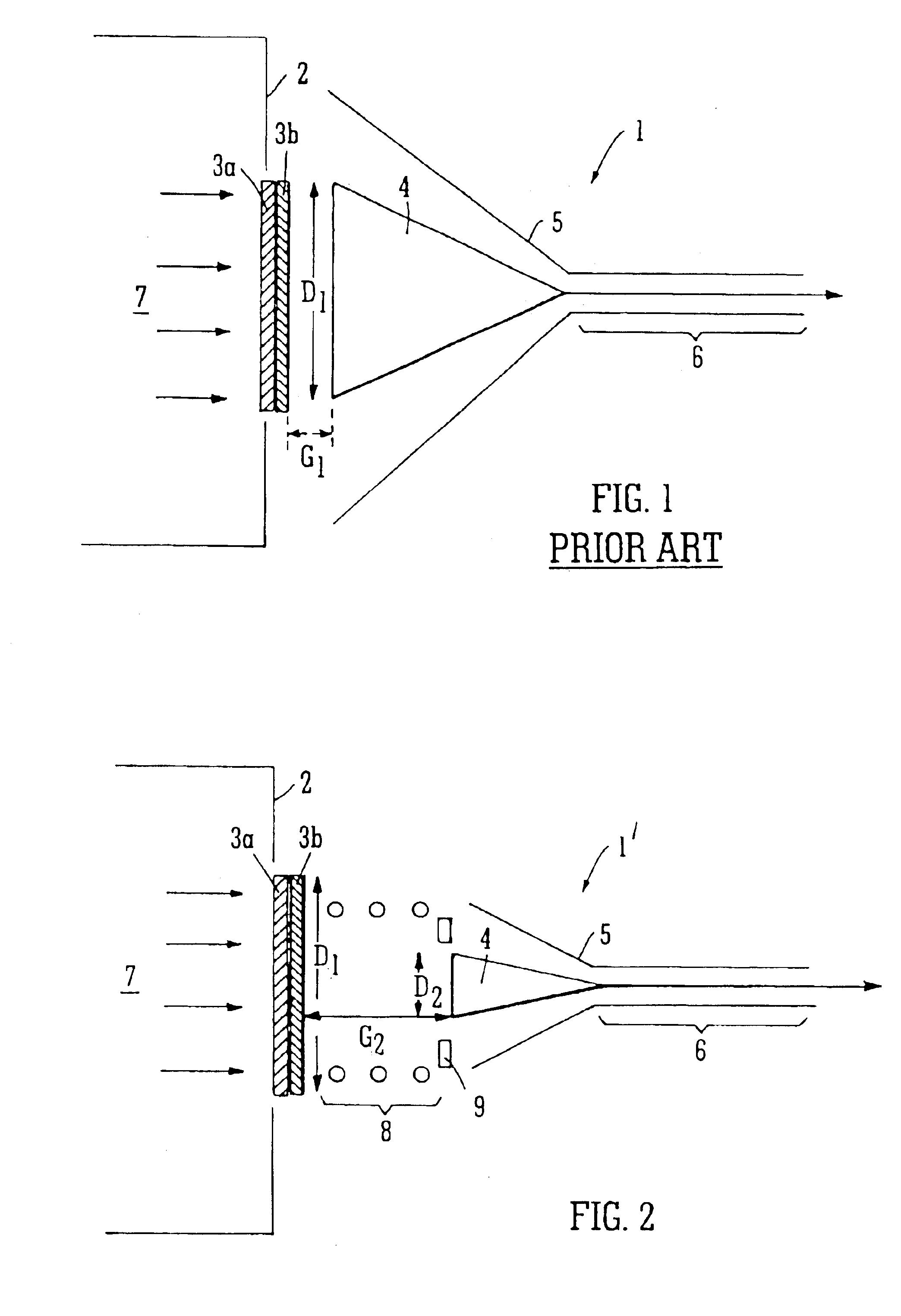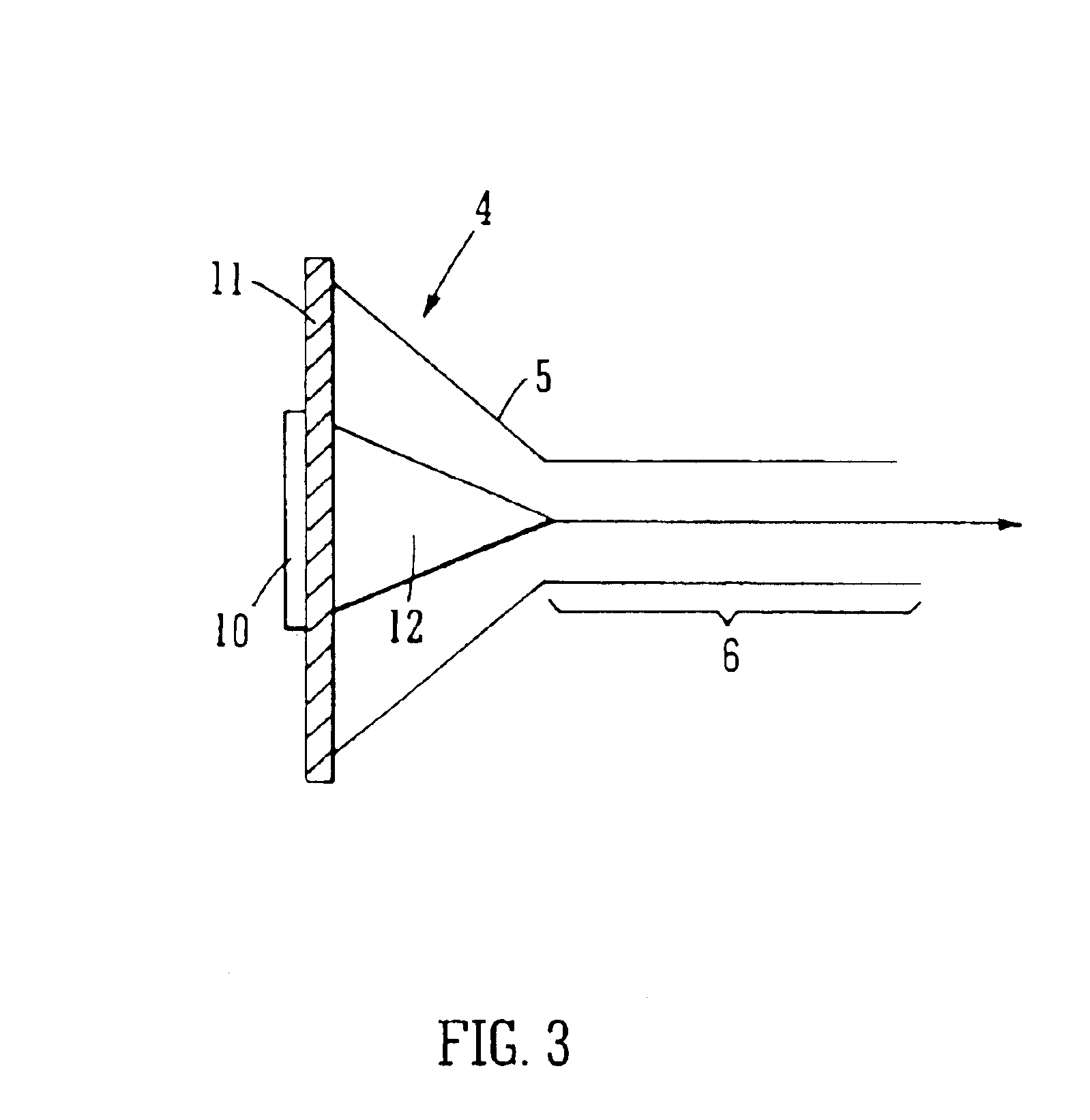Ion detector
a technology of ion detector and microchannel plate, which is applied in the field of ion detector, can solve the problems of reducing the bandwidth of the collection anode, reducing the voltage difference between the microchannel plate(s) and the collection anode, and reducing the bandwidth of the signal induced ringing noise of the collection anode, so as to reduce the detrimental effect of electric fields, reduce the voltage difference between the microchannel plate(s) and the collection anode, and the effect of ion
- Summary
- Abstract
- Description
- Claims
- Application Information
AI Technical Summary
Benefits of technology
Problems solved by technology
Method used
Image
Examples
Embodiment Construction
[0076]A conventional microchannel plate ion detector 1 is shown in FIG. 1 and comprises two microchannel plates 3a,3b arranged to receive ions 7 from a flight tube 2 of a Time of Flight mass analyser. The two microchannel plates 3a,3b are arranged in contact with each other and with the channels of the two microchannel plates being angled with respect to the interface between the microchannel plates 3a,3b. Ions 7 arriving at the ion detector 1 strike an input surface of the first microchannel plate 3a causing multiple electrons to be generated by the microchannel plate 3a. These electrons cause further cascading of electrons from the second microchannel plate 3b. The electrons generated by the microchannel plates 3a,3b then exit the rearmost microchannel plate 3b and are subsequently collected by a conical collection anode 4 arranged slightly downstream of (i.e. 5-10 mm from) the rearmost microchannel plate 3b. The output surface of the rearmost of the two microchannel plates 3b and...
PUM
 Login to View More
Login to View More Abstract
Description
Claims
Application Information
 Login to View More
Login to View More - R&D
- Intellectual Property
- Life Sciences
- Materials
- Tech Scout
- Unparalleled Data Quality
- Higher Quality Content
- 60% Fewer Hallucinations
Browse by: Latest US Patents, China's latest patents, Technical Efficacy Thesaurus, Application Domain, Technology Topic, Popular Technical Reports.
© 2025 PatSnap. All rights reserved.Legal|Privacy policy|Modern Slavery Act Transparency Statement|Sitemap|About US| Contact US: help@patsnap.com



